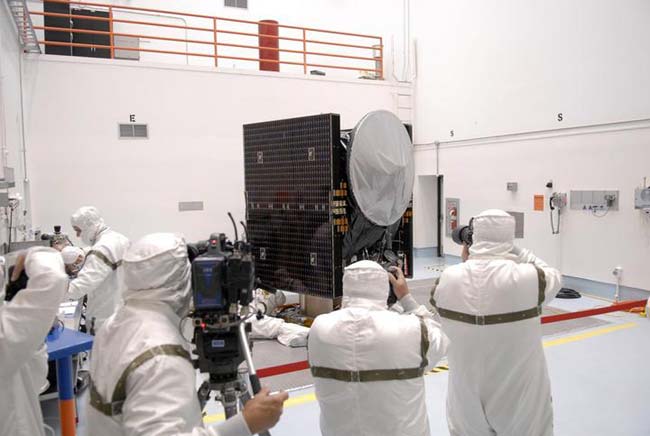NASA's Oft-Delayed Asteroid Mission Pushed to September

For thethird time in two days, NASA postponed the launch of its asteroid-bound Dawnprobe Saturday, with liftoff now slated for no earlier than September.
The newdelay for Dawn comes after its planned Monday liftoff was moved toJuly 15 earlier Saturday, but now clears the spacecraft?s Cape CanaveralAir Force Station launch site for the August flight of NASA?sMars Phoenix lander.
NASAspokesperson George Diller said mission managers opted for the new launchtarget because of limited liftoff opportunities in July and the need to preparefor the planned Aug. 3 Phoenix flight.
?A Septemberlaunch for Dawn maintains all of the science mission goals that a July launchwould have performed,? Diller said in an update from NASA?s Kennedy SpaceCenter in Cape Canaveral.
The $449million Dawn mission will be the first to launch a probe to bothVesta and Ceres, the two largest space rocks in the solar system, in theAsteroid Belt between the orbits of Mars and Jupiter.
The eight-yearmission is slated to carry Dawn first to Vesta in October 2011, where it willorbit the bright, dense space rock. After a detailed mapping mission, Dawn isslated to move on to spherical Ceres - which is also considered a dwarf planet- by February 2015.
NASAinitially had until July 19 to launch Dawn before standing down to allowpreparations for Phoenix?s August launch.
Get the Space.com Newsletter
Breaking space news, the latest updates on rocket launches, skywatching events and more!
Dawn?smission has weathered a series ofdelays over the last week. Plans for a Friday launch were reset to Sundayafter nearby storms prevented fueling of the spacecraft?s Delta 2 rocket.Mechanical issues with a telemetry relay aircraft and the unavailability of atracking ship delayed the planned launch from Sunday to Monday, and ultimatelyto July 15.
Dawn alsosurvived an initial cancellation in March 2006, before NASA revived the sciencemission a few weeks later.
NASA hasuntil about Oct. 20 to launch Dawn, after which the Vesta and Ceres begin tomove away from each other in their respective orbits, the mission?s principalinvestigator Chris Russell has said. They two space rocks will be near eachother again in about 15 years, he added.
- VIDEO: The Asteroid Paradox
- GALLERY: Asteroids
- How NASA's Dawn Spacecraft Will Explore Solar System's Origin
Join our Space Forums to keep talking space on the latest missions, night sky and more! And if you have a news tip, correction or comment, let us know at: community@space.com.

Tariq is the Editor-in-Chief of Space.com and joined the team in 2001, first as an intern and staff writer, and later as an editor. He covers human spaceflight, exploration and space science, as well as skywatching and entertainment. He became Space.com's Managing Editor in 2009 and Editor-in-Chief in 2019. Before joining Space.com, Tariq was a staff reporter for The Los Angeles Times covering education and city beats in La Habra, Fullerton and Huntington Beach. In October 2022, Tariq received the Harry Kolcum Award for excellence in space reporting from the National Space Club Florida Committee. He is also an Eagle Scout (yes, he has the Space Exploration merit badge) and went to Space Camp four times as a kid and a fifth time as an adult. He has journalism degrees from the University of Southern California and New York University. You can find Tariq at Space.com and as the co-host to the This Week In Space podcast with space historian Rod Pyle on the TWiT network. To see his latest project, you can follow Tariq on Twitter @tariqjmalik.









